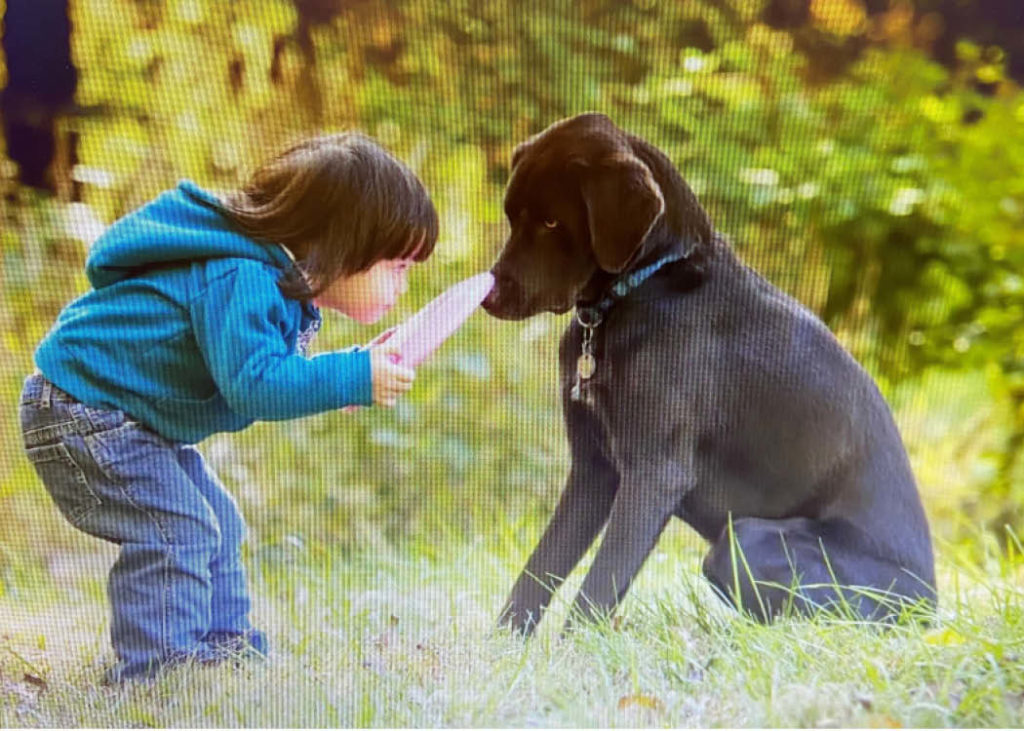reprinted with permission from Kidadl
 Having a nonjudgmental pal with paws in the family can help all kids, but it can be especially valuable to neuro-diverse children. Studies reveal how different pets can provide wonderful support for children with autism.
Having a nonjudgmental pal with paws in the family can help all kids, but it can be especially valuable to neuro-diverse children. Studies reveal how different pets can provide wonderful support for children with autism.
What Does Science Say?
The National Institute of Health has partnered with the Mars Corporation WALTHAM Center for Pet Nutrition for years to fund research on the benefits of having a family pet.
As part of this, they have studied animal interactions with kids who have autism. The findings, reported in the research article The Power of Pets, are interesting.
“We’re trying to tap into the subjective quality of the relationship with the animal—that part of the bond that people feel with animals—and how that translates into some of the health benefits,” explains Dr. James Griffin, a child development expert at NIH.
One study found that children with autism were calmer while playing with guinea pigs in the classroom, compared to playing with a toy. After spending 10 minutes in a supervised group play session, the anxiety levels of these children dropped. The research also revealed the children were more engaged with their peers. They were more likely to engage in behaviors like introducing themselves, asking for information or responding to questions.
Animals offer unconditional acceptance, which can help reassure and improve confidence levels. Even after as little as 10 minutes, it’s impressive to see social skills temporarily improve. Having a family pet from a young age is more likely to have an even greater impact on social skills.
According to Dr. Griffin, “Animals can become a way of building a bridge for those social interactions.”
But Which Pets?
Well, a study, published in the Journal of Pediatric Nursing, surveyed parents about interactions that their children with autism had with dogs. They found that 94% of families that owned a dog said their child bonded strongly with the pet.
Pets can also be trained to use a range of techniques to help calm a child, including:
- Licking the child to comfort them
- Apply weighted pressure by leaning on the child (can be a calming and grounding technique)
- Using their paws and body to block the child from injuring themselves
However, the author of the study emphasized the need to consider each child’s sensitivities and the family dynamics when thinking about pet ownership. Other reports have found that cats are also a good choice. Unlike dogs, they tend to look away after short stints of eye contact, which can be more comfortable for children with autism.
A pet can also create structure and encourage routine, which many children with autism prefer. Animals need some consistency in terms of when they are fed, when they are exercised, when they sleep, etc. Getting kids involved in this routine can help them thrive. These skills can transfer to everyday life and make the child feel proud of their role in taking care of their pet.
Neurodiversity and Pet Companionship
Neuro-diverse children may feel isolated, especially if they find socializing difficult. However, having a pet can be an icebreaker. Dr. Layla Esposito, who oversees NIH’s Human-Animal Interaction Research Program, explains: “There’s no one answer about how a pet can help somebody with a specific condition.” It depends on what your family hopes to gain from having a pet.











